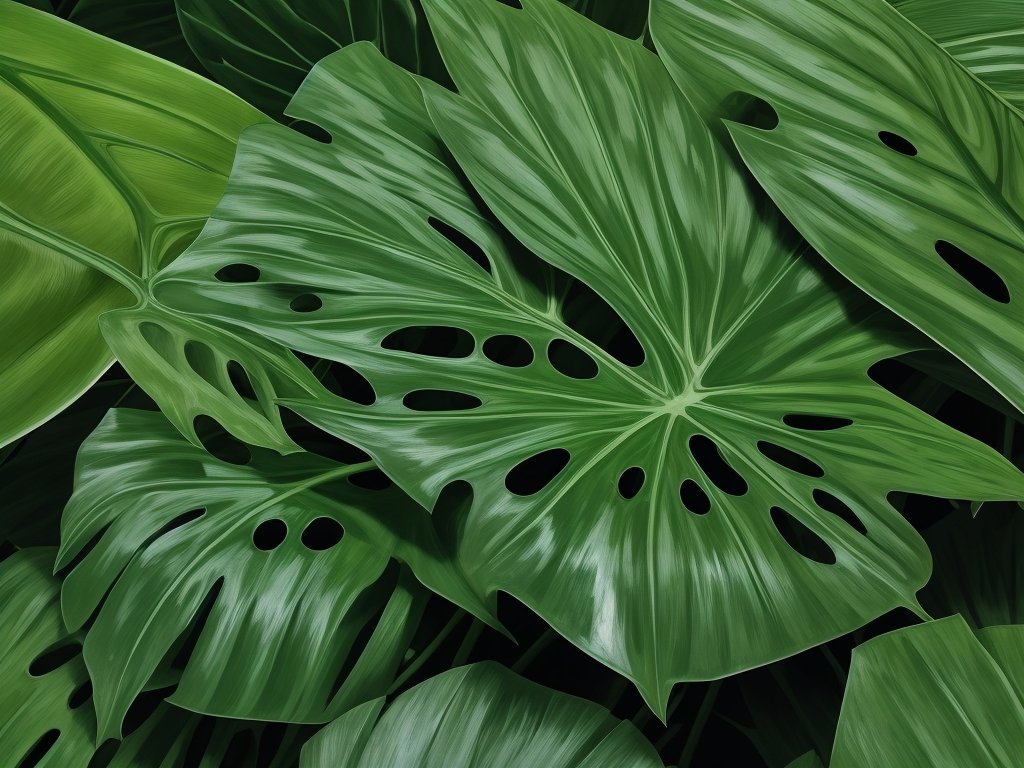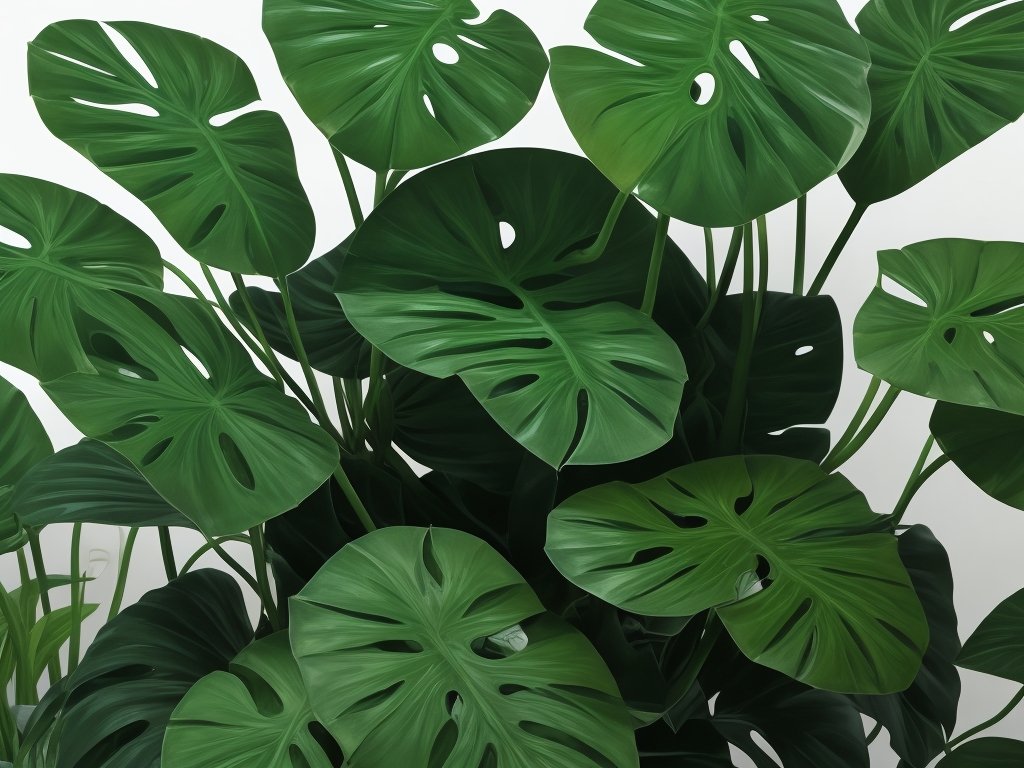How To Prune a Leggy Monstera Plant?
Key Takeaways:
- Pruning leggy Monstera plants is crucial to promote healthier growth and fuller foliage.
- Trim the long and leggy stems just above a node to encourage new growth.
- Regularly remove damaged or yellowing leaves to maintain the plant’s overall health.
- Use sharp, clean tools and avoid over-pruning to avoid stressing the plant.
Do you have a Monstera plant that’s starting to look a little leggy and overgrown? Don’t worry, I’ve got you covered! In this article, I’ll guide you through the process of pruning a leggy Monstera plant to help it regain its lush and vibrant appearance.
We’ll explore the causes of legginess and why pruning is essential.
I’ll also share the best time to prune, the tools you’ll need, and the proper techniques to follow. Plus, I’ll give you some post-pruning care tips to ensure your Monstera thrives.
So, let’s grab our pruning shears and get started!
| Step | Instructions |
| 1 | Identify the leggy stems on your Monstera plant. These are long, thin stems that are not producing leaves or are producing fewer and smaller leaves compared to the rest of the plant. |
| 2 | Locate a node on the leggy stem. Nodes are commonly found where leaves emerge from the stem. |
| 3 | Use sterilized pruning shears or scissors to make a clean cut just above the node. This will encourage new growth at that point. |
| 4 | Repeat steps 2 and 3 for all the leggy stems, pruning them back to encourage new growth. |
| 5 | Consider providing a support or trellis for the Monstera plant to grow on. This can help prevent legginess in the future by providing support for the plant to grow upwards. |
What is a leggy Monstera plant?
A leggy Monstera plant refers to a plant that has long, weak stems and sparse foliage due to lack of light.
Definition of a leggy Monstera plant
A leggy Monstera plant refers to a Monstera plant that has long, thin stems with sparse foliage. It occurs when the plant doesn’t receive adequate light, causing it to stretch towards the light source.
As a result, it may appear sparse and less compact compared to healthier, bushier plants.

Causes of a leggy Monstera plant
A leggy Monstera plant can be caused by inadequate light, overwatering, or lack of pruning.
Insufficient light leads to elongated stems as the plant tries to reach for more light.
Overwatering can result in weak growth and stretched stems.
Failure to prune regularly can cause the plant to become top-heavy and leggy.
Why should you prune a leggy Monstera plant?
Pruning a leggy Monstera plant encourages new growth and helps maintain a healthy and compact shape.
Benefits of pruning a leggy Monstera plant
Pruning a leggy Monstera plant has several benefits:
- Promotes healthy growth: Pruning helps redirect energy to areas that need it the most, encouraging new growth and improving overall plant health.
- Enhances appearance: Trimming leggy stems creates a fuller and more compact plant, making it visually appealing and aesthetically pleasing.
- Controls size: Regular pruning prevents the plant from becoming too large and overpowering the space, making it more manageable and easier to maintain.
- Prevents pests and diseases: Removing dead or decaying foliage reduces the risk of pest infestations and fungal diseases that can affect the plant’s overall vitality.
- Increases air circulation: Pruning opens up the plant, allowing better air circulation and reducing the chances of moisture-related issues such as mold or mildew.
- Stimulates new growth: Cutting back leggy stems stimulates the plant to produce new branches and leaves, resulting in a bushier and healthier Monstera plant.

When is the best time to prune a leggy Monstera plant?
The best time to prune a leggy Monstera plant is during the spring or summer months.
Seasonal considerations for pruning
The best time to prune a leggy Monstera plant is during the spring or early summer months. This is when the plant is actively growing and has the highest chance of recovering quickly from pruning.
Avoid pruning during the fall and winter months as the plant may be dormant and less resilient to damage.
Signs that indicate the need for pruning
Signs that indicate the need for pruning include:
- Overgrown or straggly appearance with long stems and sparse foliage.
- Leggy growth with leaves concentrated at the top while lower portions are bare.
- Leaves turning yellow or dropping prematurely.
- Crowded or tangled branches that hinder airflow and light penetration.
- Dead or diseased branches that pose a risk to the plant’s health.
- Crossing branches that rub against each other, potentially causing wounds or disease.
- Weak or thin stems that are unable to support the weight of the plant.
- Excessive growth in a particular direction, leading to an unbalanced or uneven plant shape.
How to prune a leggy Monstera plant?
To prune a leggy Monstera plant, gather the necessary tools for pruning and identify the areas to prune.
Then, use proper techniques to trim the plant and encourage healthy growth.
Gather the necessary tools for pruning
To gather the necessary tools for pruning a leggy Monstera plant, you will need a few essentials.
Grab a pair of sharp pruning shears or scissors, which will allow clean cuts without damaging the plant.
It’s also helpful to have a pair of gloves to protect your hands from any thorns or prickly branches.
Optional tools include a small saw for thicker branches and a spray bottle filled with water for misting the plant after pruning.
Identify the areas to prune
To identify the areas to prune in a leggy Monstera plant, look for the long and straggly vines that are growing out of control.
These vines often have few or no leaves and can appear thin and weak.
Additionally, check for any damaged or diseased leaves that need to be removed.
By pruning these areas, you can encourage new growth and maintain a healthier and more compact plant.

Proper techniques for pruning
To properly prune a leggy Monstera plant, start by using sharp and clean pruning shears. Look for areas with excessive growth or weak stems that need to be removed.
Make the cut just above a leaf node or stem junction.
Avoid cutting too close or leaving too much stem behind. Regularly clean your tools to prevent the spread of diseases.
Trim back long vines to encourage branching and fuller growth.
And don’t forget to step back and assess the overall shape and balance of the plant as you prune.
What to do after pruning a leggy Monstera plant?
After pruning a leggy Monstera plant, focus on care and maintenance, monitor its response, and adjust watering and light conditions if necessary.
Care and maintenance tips post-pruning
After pruning a leggy Monstera plant, it’s important to provide proper care and maintenance to promote new growth. Here are some tips:
- Water the plant appropriately, making sure the soil is moist but not waterlogged.
- Place the plant in a well-lit area, but avoid direct sunlight which can cause damage.
- Use a balanced fertilizer every 1-2 months to provide essential nutrients.
- Keep an eye on the plant for any signs of pests or diseases, and take prompt action if needed.
- Regularly dust the leaves to allow proper light absorption.
- Consider providing support, such as a trellis or stake, to encourage upright growth.
- Finally, be patient! It may take some time for the plant to recover and produce new foliage.
Monitoring the plant’s response to pruning
After pruning a leggy Monstera plant, it’s important to monitor its response to ensure its health and growth. Keep a close eye on the plant for any signs of stress or wilting.
Also, look out for new growth, which indicates that the pruning was successful.
Adjust your care routine accordingly and provide any necessary support, such as staking or pruning further if needed. Paying attention to the plant’s response will help you determine if any additional measures are required for its continued well-being.
Frequently Asked Questions
Can I propagate the pruned parts of the Monstera plant?
Yes, you can propagate the pruned parts of a Monstera plant. Pruning often results in extra cuttings that can be used to grow new plants.
Simply place the cuttings in water or moist soil, and they will develop roots over time.
Propagation is a great way to multiply your Monstera collection!
How often should I prune my leggy Monstera plant?
Prune your leggy Monstera plant every few months or as needed. Monitor its growth and look for signs of legginess, such as long stems and sparse foliage.
Regular pruning will help maintain its shape and encourage new growth.
Will pruning encourage new growth in the plant?
Yes, pruning encourages new growth in a leggy Monstera plant.
It helps the plant allocate energy to new branches, leaves, and shoots.
Pruning removes the older, weak growth and stimulates the plant to produce fresh, healthy growth.
It also promotes better airflow and prevents the plant from becoming overcrowded.
Final Verdict
Pruning a leggy Monstera plant is essential for promoting healthy growth, maintaining its aesthetic appeal, and preventing further legginess. By understanding the causes of legginess and the benefits of pruning, you can make informed decisions about when and how to prune your plant.
Remember to gather the necessary tools, identify the areas to prune, and use proper pruning techniques.
After pruning, provide proper care and maintenance, and monitor the plant’s response. With these steps, you can rejuvenate your leggy Monstera and create a thriving, lush display in your home or garden.





